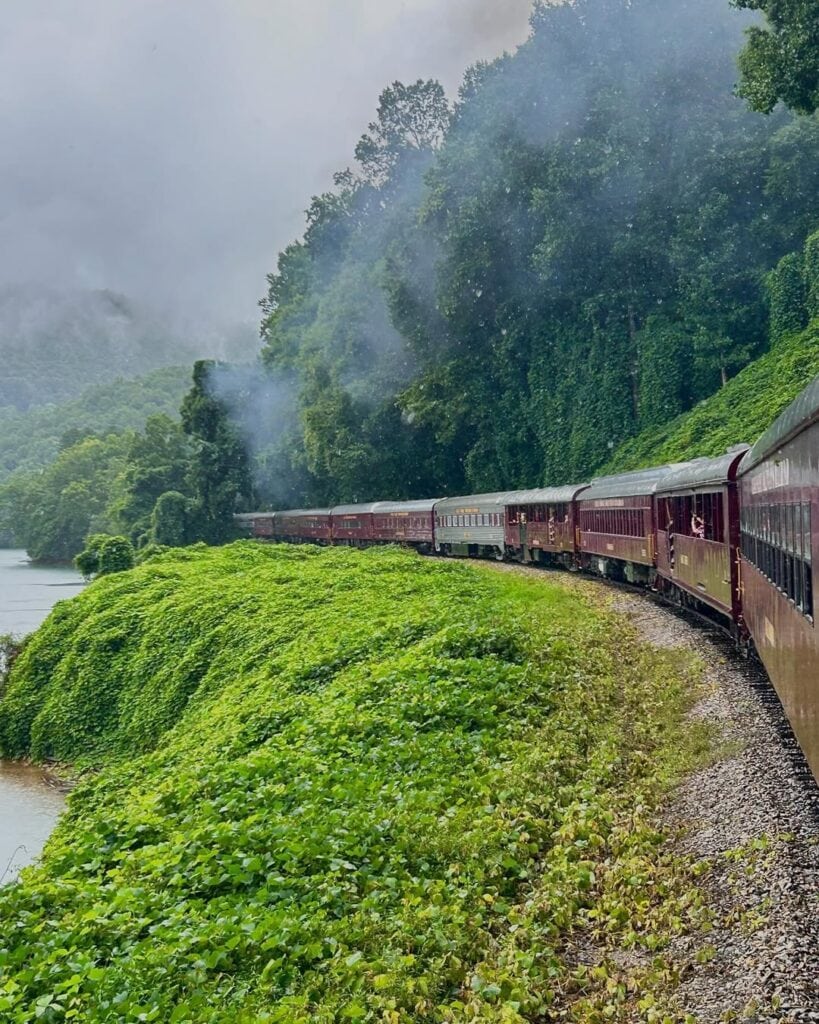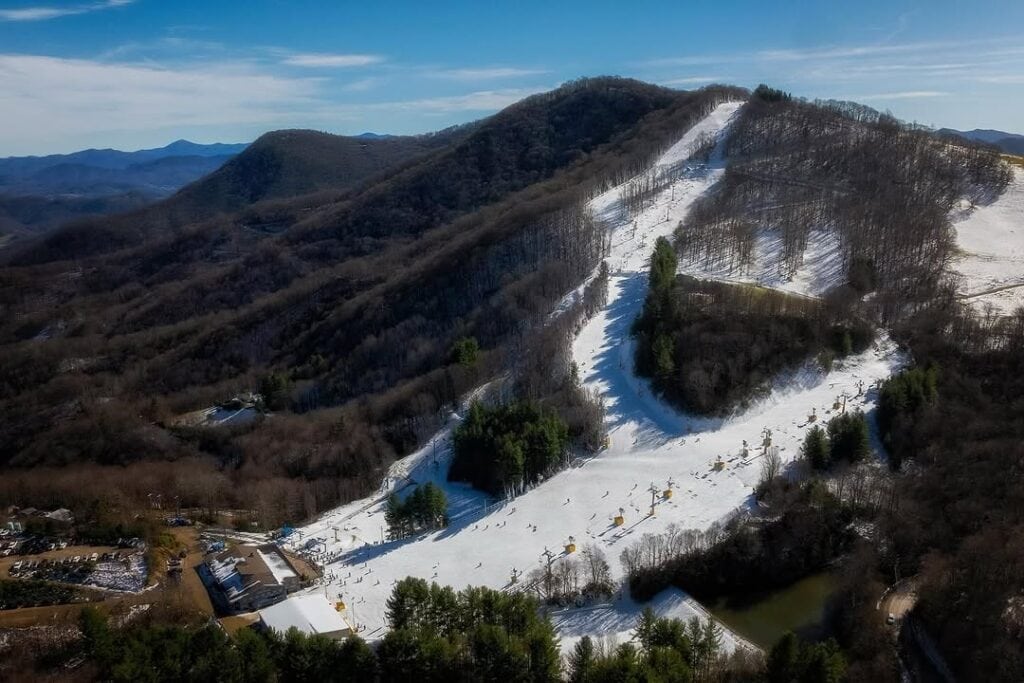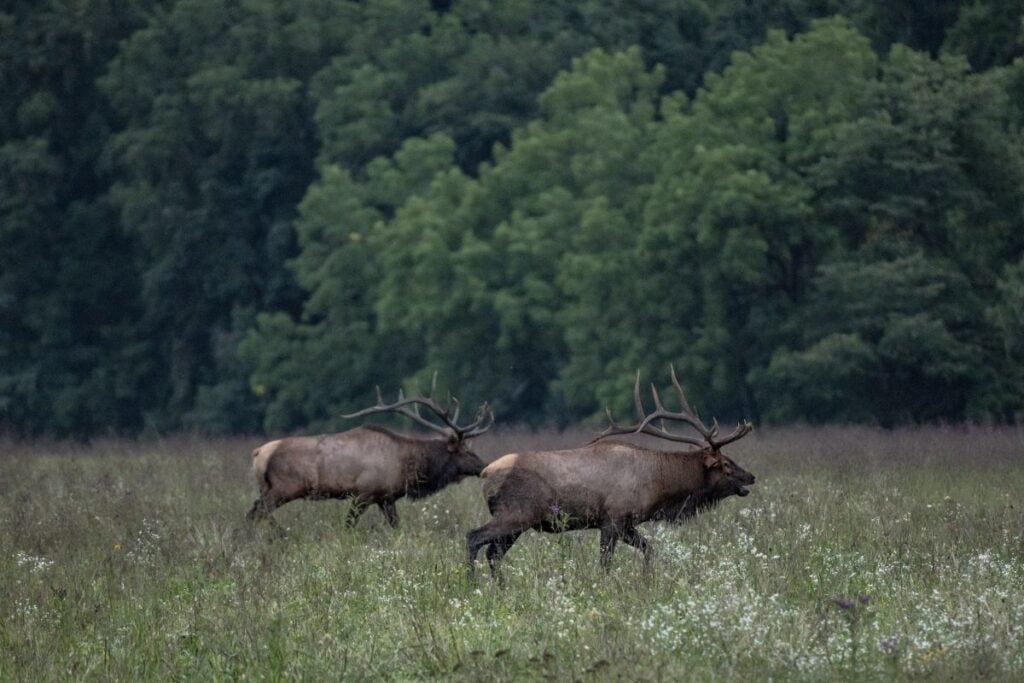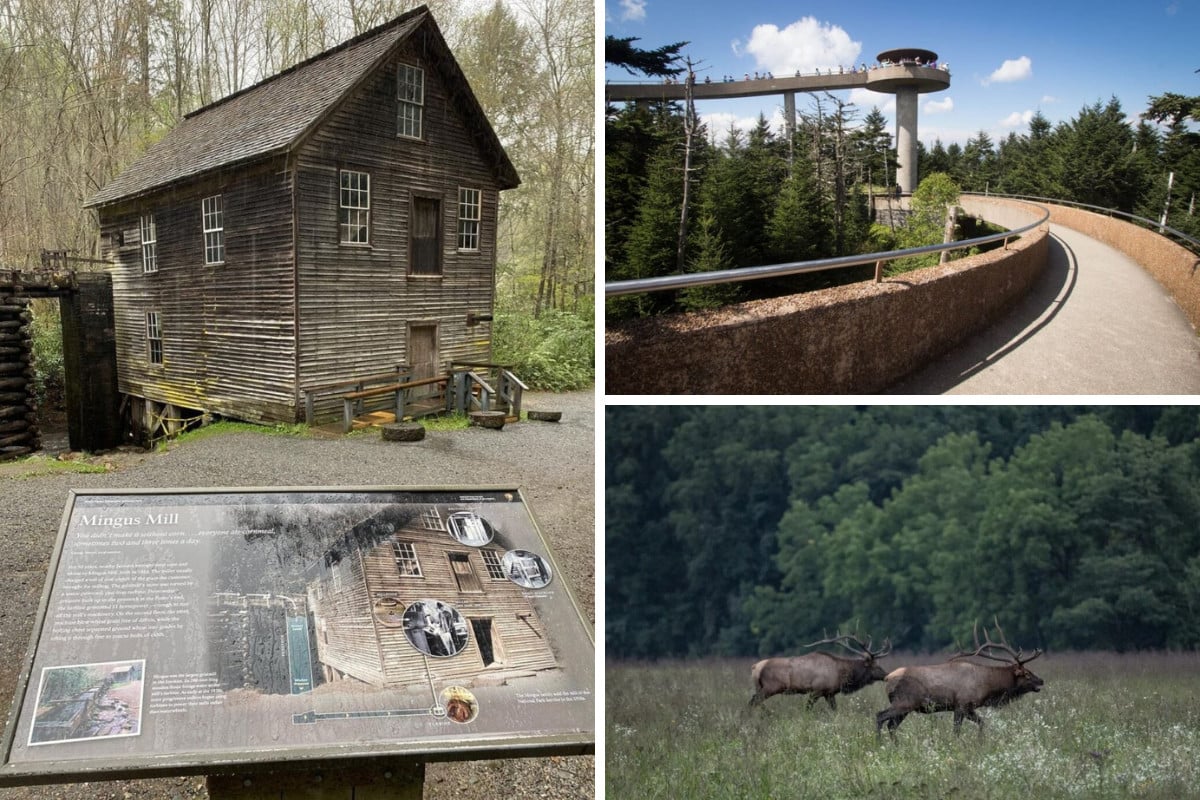13 Things to Avoid in Cherokee, NC
Would you like to save this full guide?
When I got back from the Smokies, everyone wanted to know how Gatlinburg was or if I braved Pigeon Forge traffic. The looks I got when I said, “Actually, I stayed in Cherokee,” could’ve been its own math meme.
Most folks don’t realize that Cherokee is the main entrance on the North Carolina side. That means quiet river trails, off-the-beaten-path national park gems, and cultural displays that tell the story of the land you’re standing on.
What it doesn’t mean is that Cherokee is just a warm-up act before you cross into Tennessee. It has its own rhythm. Think less neon, more history, fewer pancake houses, more chances to hear stories that stretch back centuries.
It gives fewer tourist trap vibes and more of an energy that stays with you long after you’ve gone home. You’ll probably learn some important history lessons, too, while avoiding the stop-and-go traffic of The Parkway in Gatlinburg.

Avoid Treating Cherokee as a Turnaround Point
Cherokee is more than just a place to turn around once you’ve driven Newfound Gap from Gatlinburg. Plenty of people top off the gas tank and move on, missing experiences you can’t get anywhere else.
The Museum of the Cherokee People lays out history that predates the park itself, and Unto These Hills tells the Trail of Tears story live under the stars. Add in the Oconaluftee Indian Village and riverside trails, and you’ve got a destination that’s worth exploring for a day or a weekend.

Avoid Assuming a Main Entrance Means Tons of Traffic
While traffic can be a rite of passage in the Smokies, the Oconaluftee entrance to Great Smoky Mountains National Park gets just a fraction of the Gatlinburg Spur entrance.
In fact, on average, the Cherokee entrance has 10 times less traffic!
If Cherokee traffic is still enough to trigger road rage, you can also opt for the Deep Creek or Catalochee entrances on the North Carolina side. You’ll rarely wait in traffic there!

Avoid Waiting Until the Last Day to See Cherokee
The legends you’ll hear here reshape how you see the park. Take Kuwohi, once known only as Clingmans Dome, which is considered a sacred place tied to prayers reaching the spirit world. Or the story of the Great Rabbit and other animal tales that explain the land’s features.
When you know those stories first, the park stops being just a pretty backdrop and becomes a living landscape. They might even inspire you to follow the Blue Ridge Parkway farther, chasing Judaculla to the places where legend and mountain still meet.
You did know the Blue Ridge Parkway’s southern terminus is in Cherokee, right?

Avoid Thinking It’s All Public Land
Cherokee may sit at the gateway to Great Smoky Mountains National Park, but not everything here falls under federal or state control. Much of the land is the Qualla Boundary, home of the Eastern Band of Cherokee Indians.
It isn’t a reservation because tribal members purchased and placed it into trust with the federal government in the 1800s after being forced from their homeland. That distinction matters. You’re not just wandering through park property; you’re on sovereign land with its own rules, permits, and cultural expectations. Treat it with the respect you’d give when visiting any other nation.

Avoid Missing the Weather Forecast
Gatlinburg sits at 1,300 feet above sea level, and Cherokee is almost twice that elevation. If you’re only checking the weather for the Tennessee side, you won’t be prepared for what lies ahead.
In the summer, that means less humidity and cooler temperatures as you arrive in Cherokee. Winter months could mean snow on the Cherokee side and rain or clear skies in Pigeon Forge.
If you’re driving Newfound Gap, you’ll want to know the weather conditions in Gatlinburg, at Newfound Gap, and in Cherokee. Check the NPS website or app for closure information, and since US 441 crosses state lines, you’ll need a link to Drive NC and TDOT Smart Way.

Avoid Thinking Cherokee Is the Only North Carolina Smokies Town
Cherokee is just the beginning of winding roads that lead to new North Carolina destinations. Head to Bryson City to ride the Great Smoky Mountains Railroad, or head the other direction for a trip to Maggie Valley with an elevation of more than 3,000 feet above sea level.
As beautiful as the Smokies are, heading south from Cherokee can take you to an incredible part of Pisgah National Forest or Nantahala National Forest.

Avoid Skipping Mingus Mill and Mountain Farm Museum
With so many historic buildings throughout Great Smoky Mountains National Park, you might start to feel like “Seen one log cabin/gristmill, seen them all!”
This isn’t just another set of historic buildings. The structures were gathered from across the region to preserve a way of life that would have disappeared when the park was created.
Here you see how families survived on the North Carolina side, where no roads crossed the Smokies until the 1930s. A blacksmith shop, smokehouse, corn crib, and log farmhouse sit together in one spot, often brought to life by interpreters.
Mingus Mill still grinds cornmeal with an 1886 turbine, showing how communities had to be fully self-sufficient.

Avoid Thinking All Skiing in the Smokies is on the Tennessee Side
Ober Mountain in Gatlinburg gets the hype, but Cataloochee Ski Area in Maggie Valley sits at a higher elevation (2,000 feet higher at base and peak elevation), which means more natural snow and a longer season.
It is smaller and friendlier than the resort feel of Ober, with slopes that overlook the Smokies from the North Carolina side. If winter is part of your plan, Cataloochee is where you actually want to carve your turns.
Plus, Newfound Gap Road is also US 441, which means it gets priority plowing when winter storms hit. In any event, you can also use Interstate 40 to get to Cataloochee and then visit Cherokee on the trip back.

Avoid Leaving Your Golf Clubs Behind
Sequoyah National Golf Club isn’t some members-only course you can only admire from a distance. It’s open to the public, and the setting is as dramatic as the name suggests. It’s located in Whittier, less than five miles from Cherokee, but still on the Qualla Boundary.
Designed with help from Robert Trent Jones II, the course winds through ridgelines and valleys with views of the Smokies on nearly every hole.
Unlike the golf courses on the Tennessee side, you don’t just get mountain views in front of you. It’s an immersive experience complete with elevation changes as you go. Enjoy that view of Kuwohi while getting more Cherokee heritage lessons.
Avoid Missing Fishing on the Qualla Boundary
If you want to fish around Cherokee, you’ll find some of the best stocked trout waters in the Southeast, but the Qualla Boundary has its own permitting system.
A Cherokee fishing permit is required, even if you already have a North Carolina or Tennessee license. The payoff is worth it: more than 30 miles of streams are stocked twice a week, with 2.2 miles of the water for fly-fishing.
With a quarter of a million fish and four types of trout stocked annually, anglers get better odds than most anywhere in the park.
Avoid Stating You Are Part Cherokee Unless You Know for Sure
Many visitors feel tempted to mention that they are “part Cherokee” or that a relative once claimed Cherokee ancestry. Unless you have verified lineage and a clear understanding of your family history, it is best not to bring this up.
The Eastern Band of Cherokee Indians, along with the Cherokee Nation and United Keetoowah Band in Oklahoma, maintain detailed citizenship rolls. To verify ancestry, start with your family’s birth, marriage, and death records, then compare them to the historical rolls that each tribe uses for enrollment.
Keep in mind, there isn’t just one “Cherokee tribe.” The Eastern Band in North Carolina and the two federally recognized tribes in Oklahoma are all distinct sovereign nations.

Avoid Treating Elk Like Petting Zoo Animals
Cherokee is one of the best places in the Smokies to spot elk, especially around the Oconaluftee Visitor Center, the River Trail, and Cataloochee Valley.
But remember, these are wild animals that weigh several hundred pounds and can charge if you crowd them. They get especially testy during the fall rut (mating season).
Stay at least 50 yards away, keep food in your bag, and use binoculars or a zoom lens instead of your phone at arm’s length. Elk watching should feel like a discovery, not a close-up selfie attempt.
Avoid Spending Too Much Time in the Casino
Sure, it’s fun to feel a little Vegas action in Appalachia, but you’re missing out on so many unique experiences outside the casino floor. Set a limit and stick to it. You can still do some offline bets, like “bet I can beat you to the top of the Mingus Falls stairs!”
Plus, instead of reading poker faces, wouldn’t you rather read about Aniyvdaqualosgi, aka “The Thunderers” that wait for you at the waterfall?

The One Thing You Shouldn’t Avoid in Cherokee
Don’t avoid diving in. Whether it’s stepping into the Museum of the Cherokee People, pausing at Oconaluftee to watch elk at dusk, or sitting through a story that ties the mountains to legend, the real win is giving Cherokee your full attention.
Too many travelers pass through on their way to Gatlinburg, but the ones who stop, listen, and explore discover that Cherokee isn’t just beside the Smokies. It’s the key to understanding their essence for time immemorial.







